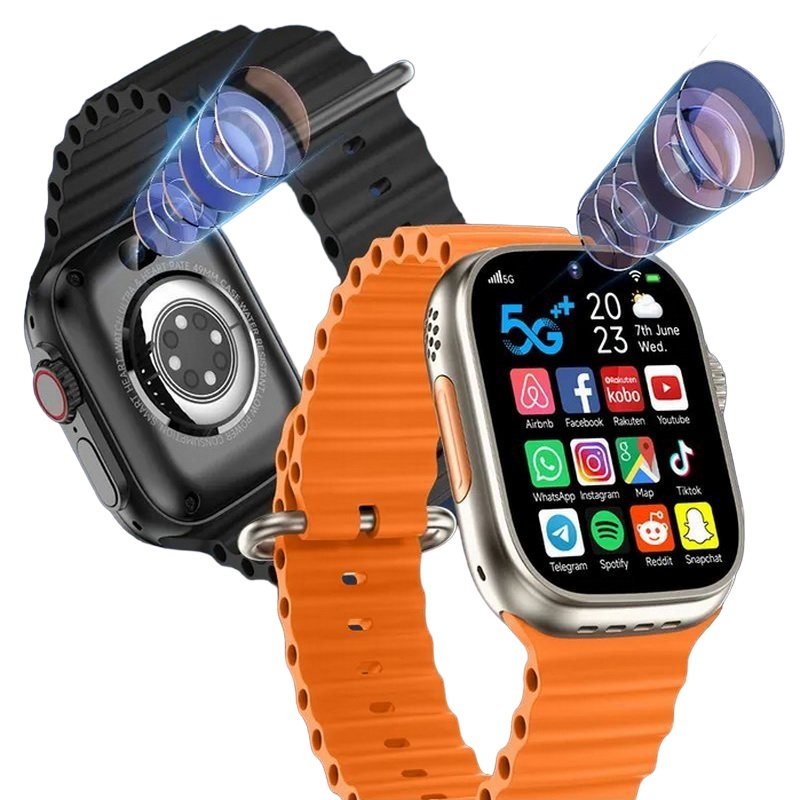Smart Kitchen Gadgets Becoming a Viral Trend is captivating the culinary world as innovative tools transform how we cook and prepare meals. These gadgets not only enhance convenience but also make cooking fun and engaging for all skill levels. With rapid advancements in technology, a variety of smart devices are surfacing, making waves on social media and in kitchens worldwide.
From smart thermometers to voice-activated assistants, these gadgets are designed to simplify tasks and elevate cooking experiences. Whether you are a seasoned chef or a beginner, these tools promise to add efficiency and excitement to your cooking routine.
In the age of digital communication, the way we interact with others has transformed significantly. The rise of social media, instant messaging, and email has made it easier than ever to connect with friends, family, and colleagues from all around the world. However, amid this convenience, the nuances of communication can sometimes get lost. This article explores the evolution of communication, the impact of technology on our interactions, and some best practices for effective communication in both personal and professional settings.
The Evolution of CommunicationCommunication has always been a fundamental part of human interaction. From the early days of spoken language to the development of writing systems, humans have continually sought ways to express thoughts, ideas, and emotions. The invention of the printing press in the 15th century marked a significant turning point, allowing for the mass dissemination of information and the birth of modern communication.As we moved into the 20th century, innovations such as the telephone and radio revolutionized how people connected.
Suddenly, one could converse with someone miles away in real-time. The late 20th century saw the advent of the Internet, which fundamentally changed the landscape of communication once again. Emails, instant messaging, and social media platforms emerged, making it possible to communicate instantly with anyone, anywhere. The Impact of Technology on CommunicationWhile technology has vastly improved our ability to stay connected, it has also introduced new challenges.
The speed of digital communication can lead to misunderstandings. A message sent hastily, without the nuances of tone or body language, can be misinterpreted. Additionally, the prevalence of abbreviations and emojis in messaging can sometimes lead to confusion, particularly across different cultures.Moreover, the 24/7 nature of online communication can create pressure to respond quickly, leading to stress and anxiety. Many people feel they must be constantly available, which can sometimes encroach on personal time and relationships.
Finding a balance between being responsive and preserving personal boundaries is crucial for maintaining healthy communication habits. Best Practices for Effective CommunicationTo navigate the complexities of modern communication, here are some best practices that can enhance your interactions, both personally and professionally:
1. Be Clear and Concise
When communicating, especially in written form, aim to be as clear and concise as possible. Avoid long-winded explanations, and get to the point. This is particularly important in professional settings, where time is often of the essence.
2. Use Appropriate Channels
Different messages may require different communication channels. For instance, sensitive topics are often best discussed face-to-face or over a video call rather than through text. Similarly, urgent matters might warrant a phone call instead of an email.
3. Practice Active Listening
Effective communication is as much about listening as it is about speaking. When someone is speaking to you, give them your full attention. Avoid interrupting and demonstrate that you are engaged by nodding or asking clarifying questions.
4. Be Mindful of Tone
Written communication lacks the tonal nuances of face-to-face conversations. Consider how your message might be perceived and strive for a tone that reflects your intent. When in doubt, err on the side of politeness.
5. Embrace Empathy
Understanding the emotions and perspectives of others can significantly improve communication. Try to put yourself in the other person’s shoes and communicate with empathy. Acknowledging someone’s feelings can go a long way in fostering a positive interaction.
6. Limit Distractions
In our fast-paced digital world, distractions abound. When engaging in a conversation, especially important ones, try to limit distractions. Put your phone away, close unnecessary tabs on your computer, and focus on the person in front of you.
7. Follow Up
In professional environments, following up on conversations can reinforce your commitment and professionalism. A simple email summarizing the main points discussed can provide clarity and show that you value the other person’s input. Navigating Cultural DifferencesIn today’s globalized world, communication often crosses cultural boundaries. What might be considered polite in one culture could be perceived differently in another. Being aware of cultural differences in communication styles can prevent misunderstandings and foster better relationships.
For example, in some cultures, direct communication is valued, while in others, a more indirect approach is preferred. Understanding these nuances can help you tailor your communication style accordingly, making your interactions more effective and respectful. The Future of CommunicationAs technology continues to evolve, so too will our methods of communication. The rise of artificial intelligence (AI) and virtual reality (VR) is poised to change how we interact yet again.
Tools like chatbots are already transforming customer service interactions, and VR may allow for more immersive communication experiences in the future.However, regardless of how technology develops, the core principles of effective communication—clarity, empathy, active listening, and respect—will remain crucial. Adapting to new technologies while holding onto these timeless values will ensure that we can connect meaningfully in an ever-changing digital landscape.
ConclusionThe landscape of communication has undergone significant changes over the centuries, particularly with the advent of technology. While these advancements have made it easier to connect with others, they also present new challenges that require us to be more mindful and strategic in our interactions. By embracing best practices for effective communication and being aware of cultural nuances, we can navigate our relationships with greater ease and understanding.Ultimately, mastering the art of communication is an ongoing journey.
As we continue to develop our skills, we contribute to building stronger connections that enrich our personal and professional lives. By prioritizing clarity, empathy, and active engagement, we can ensure that our interactions are not just efficient, but also meaningful and impactful.
Query Resolution: Smart Kitchen Gadgets Becoming A Viral Trend
What are smart kitchen gadgets?
Smart kitchen gadgets are digital devices designed to enhance cooking efficiency and convenience, often connected to apps or the internet.
How do smart kitchen gadgets improve cooking?
They streamline tasks, provide real-time data, and can often be controlled remotely, making cooking easier and more precise.
Are smart kitchen gadgets worth the investment?
Yes, many users find that the time saved and the enhanced cooking experience justify the investment in smart kitchen gadgets.
Can I use smart kitchen gadgets if I don’t have much tech experience?
Absolutely! Most smart kitchen gadgets are designed to be user-friendly and come with simple instructions.
What are some popular examples of smart kitchen gadgets?

Popular examples include smart ovens, instant pots with app control, and smart kitchen scales.













